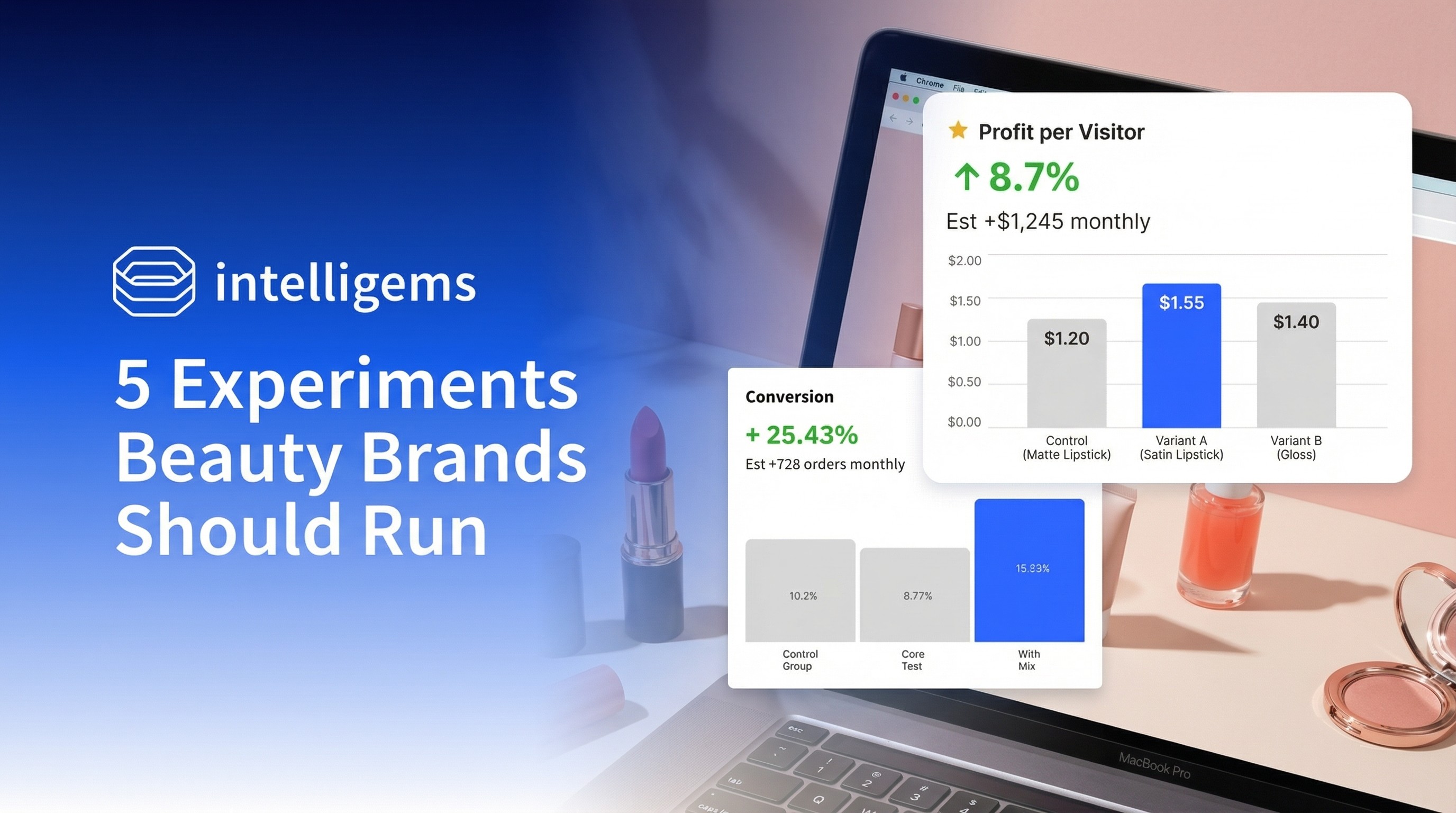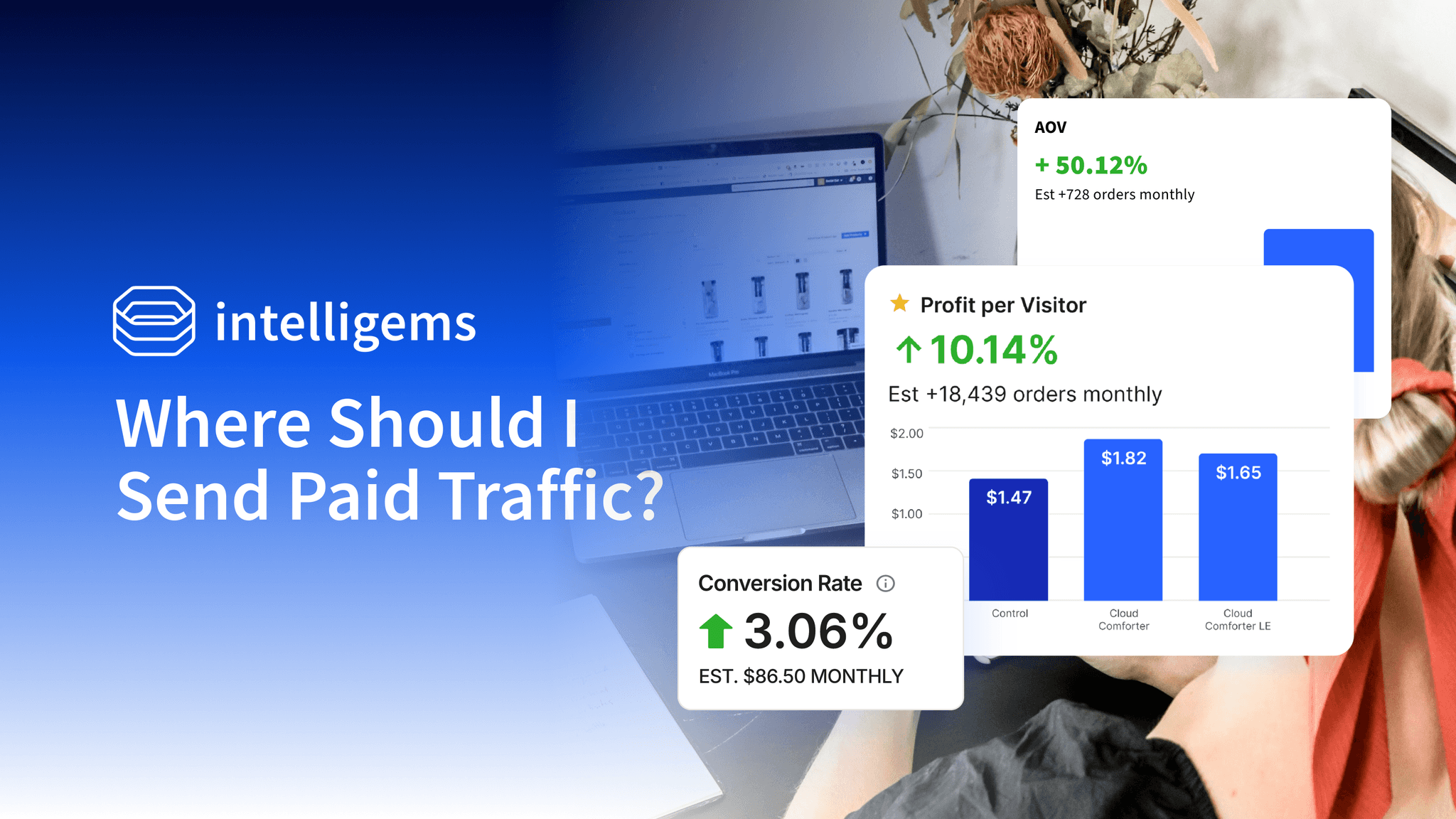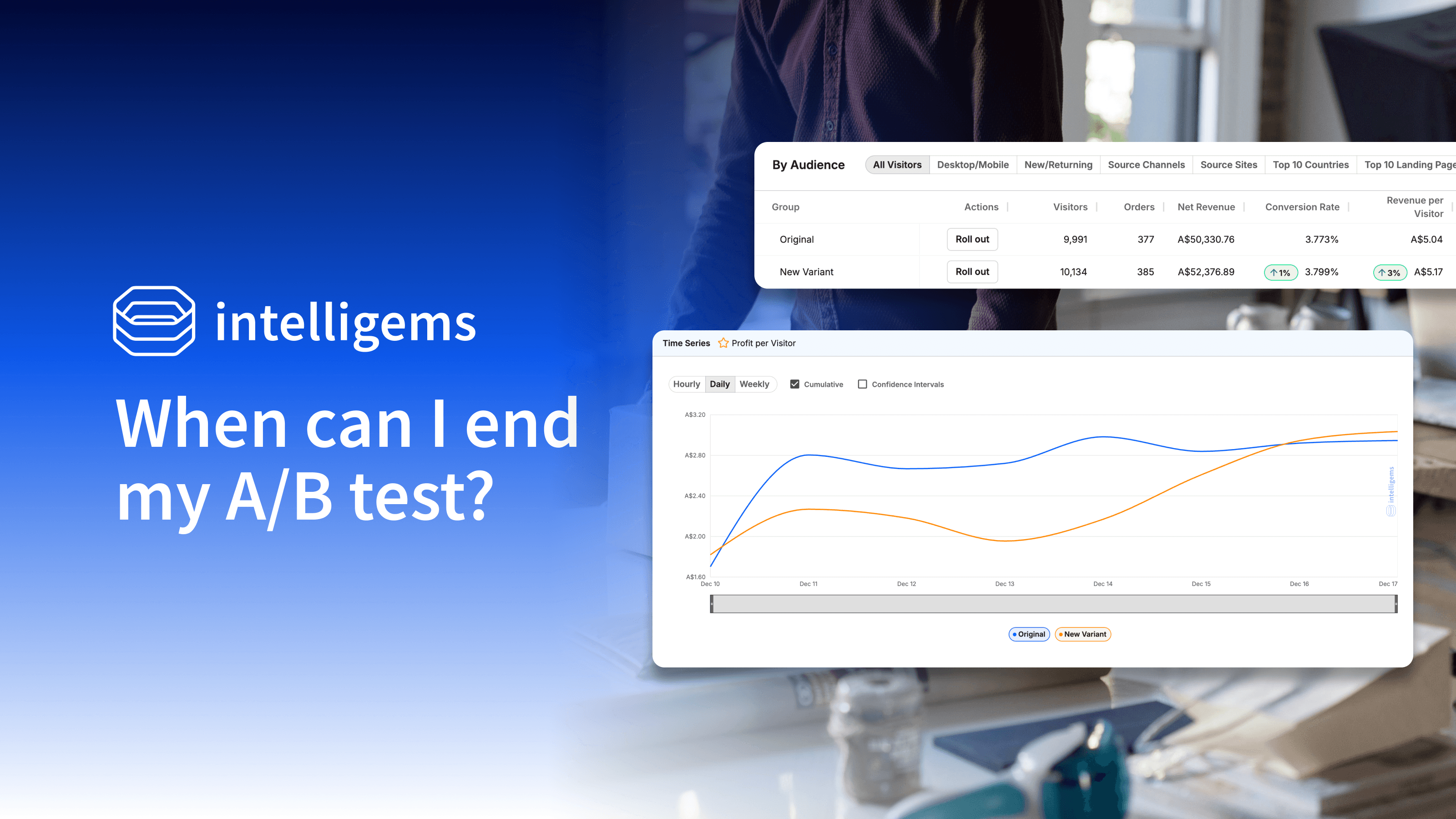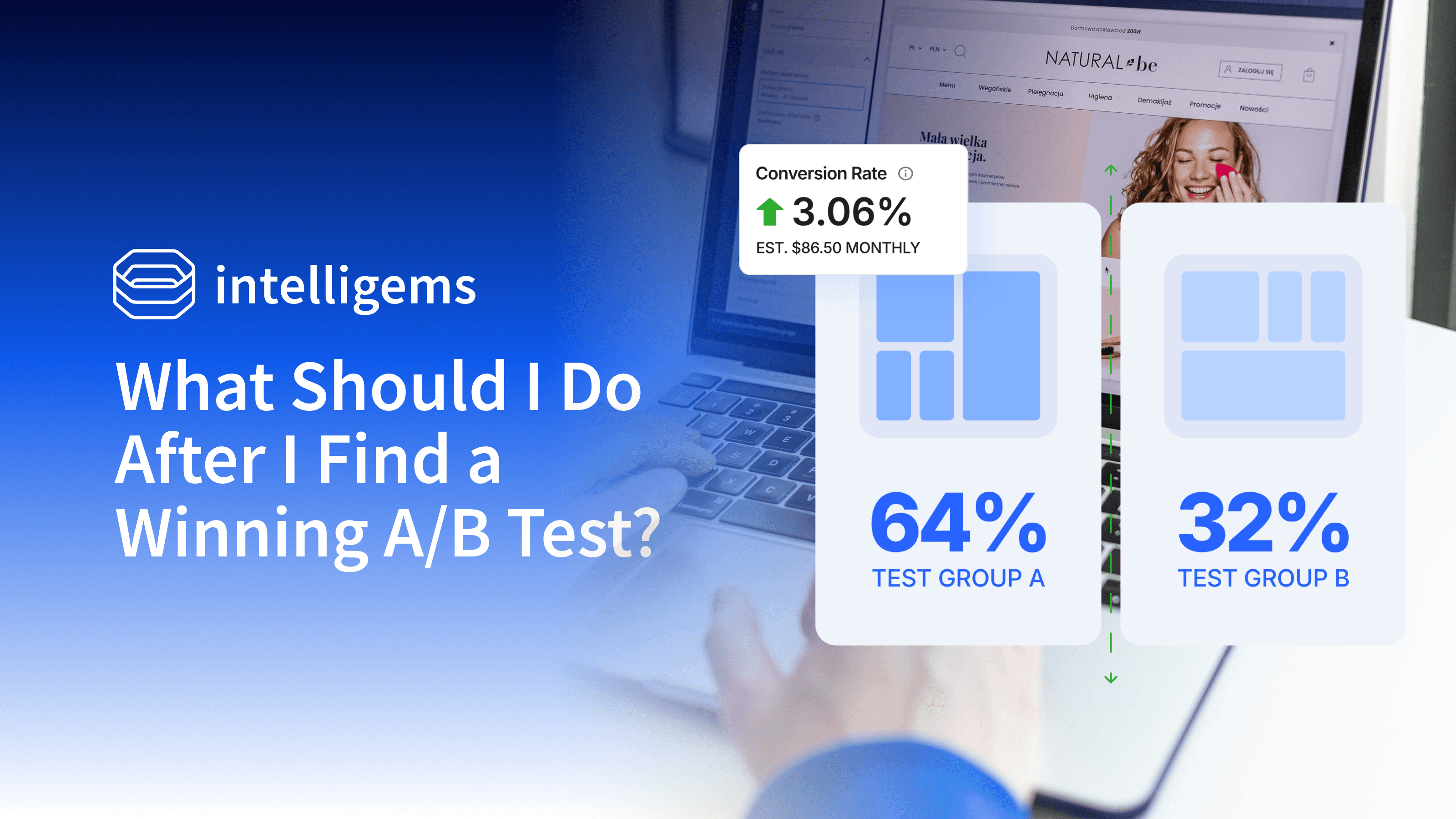Expert Guide
Jun 28, 2024
Expert Guide: Why You Should Always Start With Offer Testing
Thoughts from an industry expert on how to optimize your store's profits through offer strategy

Shane Rostad
Once you’re convinced you should be optimizing your store, the first question is naturally “where do we start?”
This is one area where I’m different from most “experts.” They would tell you not to jump right into testing. Instead, you should start with “do a bunch of research — so you know you’re testing the right things.”
I’m not saying they’re wrong, but there’s something magical about running your first test. The second you see that data start to roll in it’s like something changes in your brain. Ideas for things you want to test start popping up on a daily basis.
But even so, you do need to start somewhere. So what do you do?
You need to start with offer testing.
Offer Testing 101
An offer has two components:
What you are selling
What price you’re selling it for
If the quality of your marketing is constant, these two factors impact your profits — not your conversion rate — the most.
This is an important distinction.
You can sell your $30 widget for $5 and quadruple your conversion rate while going bankrupt. At the same time, you can sell your $30 widget for $40 and see no change in conversion rate at all — while making 33% more revenue.
That's why you should always start with changing your offer — what you're selling and/or at what price you're selling it. Lucky for us these also tend to be the easiest tests to implement.
How changing your price impacts your profits
Changing what you sell can be time-consuming. Not only are their manufacturing and logistics factors to consider, you’ll need new photography, spend time creating new products in Shopify — the list goes on.
With price, you can get fancy and create bundles or test different discounts, but that’s also time-consuming. Instead, the biggest lever you have for increasing your profits is simply increasing the price of your best-selling products.
Think about selling a $30 widget. If the profit margin on that widget is 50%, you take home $15. If you raise prices by 10% to $33 and see no drop in conversion rate, you are now taking home $18.
That's a 20% increase in profits on every sale with only a 10% increase in price.
The best part about this is that it’s also the easiest thing to test. With Intelligems, all you have to do is change a number. From there, the team can help you get it up and running within a couple of hours.
To get started I recommend increasing the price of your best-selling products by 10%. That’s is small enough to go unnoticed by your best customers but still enough to have a significant impact on your margins.
With the results from your test, you can start testing prices across your whole catalog — reducing price on stale inventory items, high-low testing on your mid-range products, and reformatting new customer discounts.
How to change what you’re selling without making new products
Price testing is great because it's effective and easy to set up. But sometimes changing your price can be intimidating. How will customers react? Will you hurt sales if you raise by too much?
These thoughts are usually a bit overblown, but the psychological barrier is real. So instead of increasing your prices, test the other side of your offer — what you are selling.
There are dozens of ways to do this without adding a single new item to your product catalog. You can bundle products together. You can sell smaller or larger versions of your product. You can restrict people to buying two-packs or three-packs instead of individual products.
My favorite way to test what you’re selling is through quantity discounts.
Think about our $30 widget. What if someone wants to buy two? Do you simply charge them 2x the price? That's fine, but it doesn’t give your customers a reason to buy more than one.
In his book Influence, Robert Cialdini describes how much more likely we are to say yes to something if given a reason.
“A well-known principle of human behavior says that when we ask someone to do us a favor we will be more successful if we provide a reason. People simply like to have reasons for what they do.”
“Langer demonstrated this unsurprising fact by asking a small favor of people waiting in line to use a library copying machine: Excuse me, I have five pages. May I use the Xerox machine because I'm in a rush? The effectiveness of this request-plus-reason was nearly total: Ninety-four percent of those asked let her skip ahead of them in line.”
“… when she made the request only: Excuse me, I have 5 pages. May I use the Xerox machine? Under those circumstances, only 60 percent of those asked complied.”
It might sound silly, but the desire to "stock up" to "get a deal" is very real. Just look at Costco. Some people will buy anything in large quantities if you give them a reason to. Seventy-two-pound wheel of parmesan, anyone?
If someone has that desire they’re probably asking themselves if they should buy more of your product. Simply providing them a reason, a “because,” can significantly increase the likelihood that they do.
A few favorite examples of offers done right
Frey Adds Quantity Selectors
My favorite example of bundling is from Frey. They sell all-natural laundry detergent in a concentrated formula.
In an effort to test their core offers they decided to try adding “pack” selectors:
In this case, buying two bottles gives you 10% off, and buying three bottles gives you 15% off.
You’re probably thinking about how they’re changing both what they sell and the price they sell it at. I must admit you’re right. But when you change the composition of what you sell it will almost always come with a price change.
They could have skipped the price reduction for the two- and three- packs. But if we follow Cialdini’s advice, people are much more likely to take action when given a reason to — aka, give them a discount!
In Frey’s case, adding this “bulk” pricing netted them a significant increase in AOV. After making the change Frey saw that over 50% of customers chose to purchase 2 or more bottles instead of 1.
Frey took this test a step further by increasing the price of a single bottle from $20 to $25.

Now the incentive to buy two bottles is 20% off, and three bottles is 30% off. This change further increased AOV because they’re selling multiple bottles for the same price they were before the quantity discounts.
Running a test like this doesn’t have to be fancy either. With most Shopify themes you can simply add a “quantity” variant to your product and change the price accordingly.
Once you have data from this test — and see what works — you can start to get fancy with the design of the offer.
True Classic Creates “Packs”
But you don’t have to redesign your product page to test quantity discounts.
My favorite example is True Classic, a brand that got its start by selling shirts that simply fit men with average bodies.
Early on they had a realization that some men like to find a shirt they like and buy it in a bunch of colors. So they created shirt “packs.”

You can buy 3-Packs, 6-Packs, and 9-Packs of their shirts in different combinations of colors. And, of course, the more you buy, the better deal you get.
Setting up a test like this is fairly simple. You create the new products in Shopify, add them to a collection, and feature them on your home page. In group A, you show the new product packs. In group B, you don’t show the packs.
Get started testing today, Intelligems makes offer testing easy
Remember the important thing is to just get started. Once you see the data rolling in, the ideas for what to test will start pouring out of you.
Of course, you can start to do some research to help prioritize them. But don’t let research be the thing that holds you back from just getting started.
With the creative iteration bottleneck gone, you now face a different challenge: you have too many things you want to test. I’ve seen it in 100% of the clients I work with.
To keep the flywheel spinning, you need the ultimate profit optimization tool: Intelligems.
Intelligems is built specifically for Shopify to test any kind of content your heart desires.
Author: Shane Rostad, The go-to guy for 7- and 8-figure Shopify store owners that want to increase their conversion rate.
Discounts
Campaigns
Ecommerce Strategy








